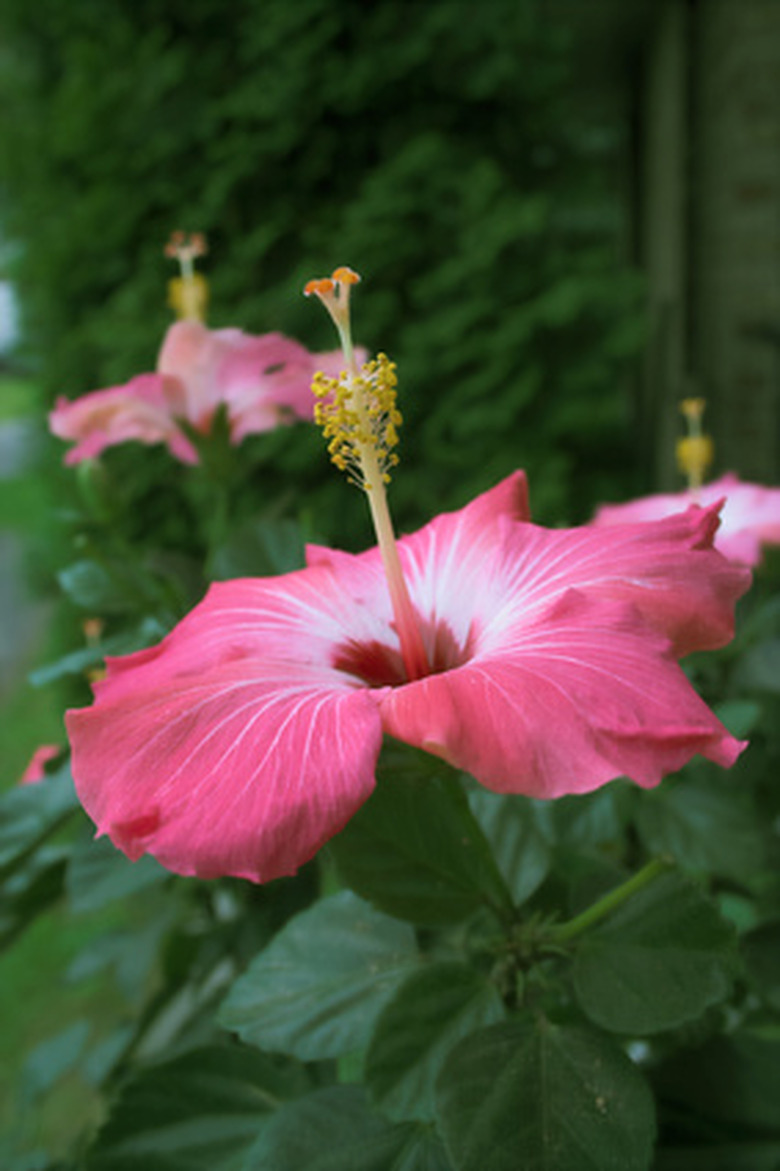What Are The Adaptations Of The Hibiscus Plant?
Hibiscus, with their showy flowers, grow in tropical climates but also make striking additions as summer annuals in northern landscapes. The plants have evolved to survive, adapting their physical characteristics to maximize pollination, which plants cannot perform on their own.
Pollinators
Pollinators
Hibiscus are pollinated by insects such as butterflies, but they are pollinated mostly by hummingbirds. The birds hover at the bloom, draw nectar and transfer pollen by coating themselves with it via their flapping wings.
Color
Color
Hibiscus are unscented but have bright colors, particularly red hues. Many hibiscus varieties are shades of red, orange and pink, which hummingbirds like.
Shape
Shape
Hibiscus petals and their middle stamens form a bulls-eye, which helps guide hummingbirds, with their long, slender bills, into the flower. The flower's middle stamen features anthers covered with yellow pollen and five dark stigmas on its end.
Food
Food
Hibiscus, and other plants that rely on animals for pollination, must offer the animals more than visual stimulation to ensure they return. So they also serve nectar, located deep within the bloom, so that pollen gets disturbed and distributed.
Size
Size
The large flowers of the hibiscus ensure that large amounts of water and sunlight are absorbed by the plant.
Cite This Article
MLA
Brown, Joy. "What Are The Adaptations Of The Hibiscus Plant?" sciencing.com, https://www.sciencing.com/adaptations-hibiscus-plant-6025079/. 22 November 2019.
APA
Brown, Joy. (2019, November 22). What Are The Adaptations Of The Hibiscus Plant?. sciencing.com. Retrieved from https://www.sciencing.com/adaptations-hibiscus-plant-6025079/
Chicago
Brown, Joy. What Are The Adaptations Of The Hibiscus Plant? last modified March 24, 2022. https://www.sciencing.com/adaptations-hibiscus-plant-6025079/
